Tourist Accommodation
Open dates in 2025: all Year https://loughcrew.com/
Garden open dates in 2025: all year, 11am-5pm
Fee: €8, OAP/student €6, child €4, carers free

donation
Help me to pay the entrance fee to one of the houses on this website. This site is created purely out of love for the subject and I receive no payment so any donation is appreciated!
€15.00

2025 Diary of Irish Historic Houses (section 482 properties)
To purchase an A5 size 2025 Diary of Historic Houses (opening times and days are not listed so the calendar is for use for recording appointments and not as a reference for opening times) send your postal address to jennifer.baggot@gmail.com along with €20 via this payment button. The calendar of 84 pages includes space for writing your appointments as well as photographs of the historic houses. The price includes postage within Ireland. Postage to U.S. is a further €10 for the A5 size calendar, so I would appreciate a donation toward the postage – you can click on the donation link.
€20.00
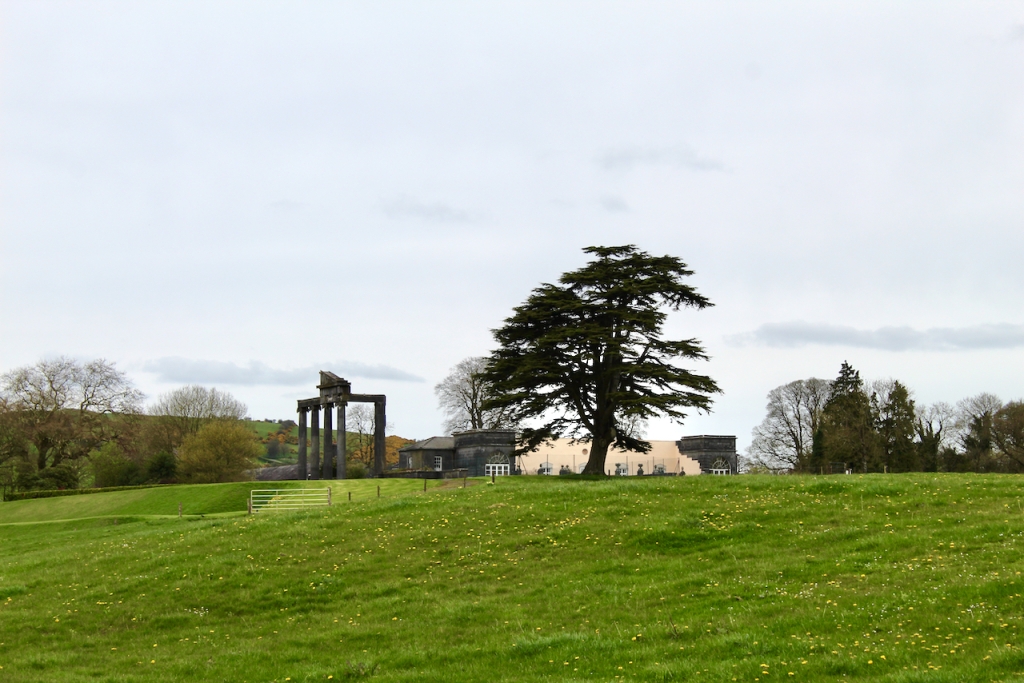
Loughcrew is listed under the Revenue Section 482 listing as Tourist Accommodation. Stephen and I stayed there along with about eighteen friends for our combined “Hen-Stag” in 2010! We spent a wonderful sunny May weekend, where we had a dinner at one long dining table, danced in the function room and swam in the nearby lake.
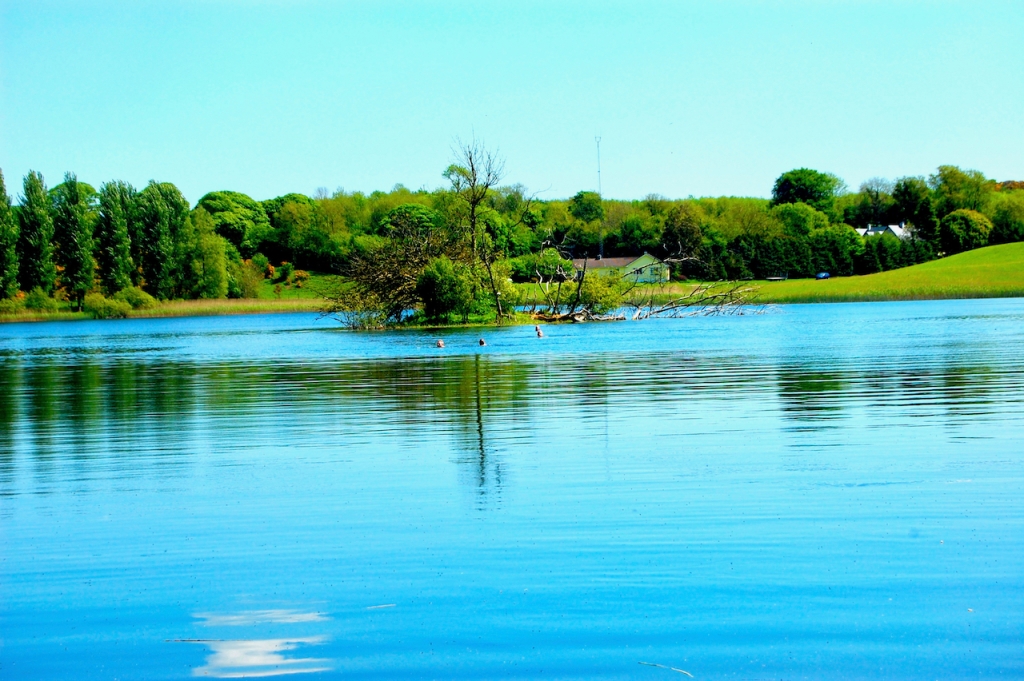
The gardens are open to the public separately, as the house is not open to the public.
The house where we stayed was originally the Garden House. All that remains of the main house today is the now-freestandng portico. [1]

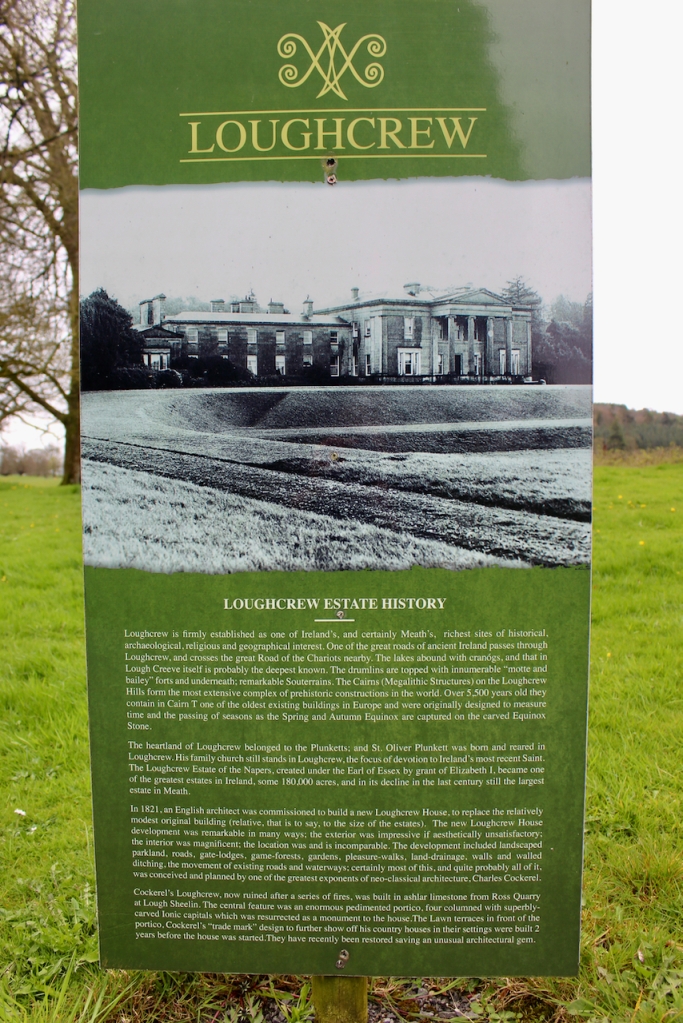
Originally the seat of the Plunkett family, its most famous member being St. Oliver Plunkett (1625-1681), whose church still remains today on the estate, the first Loughcrew House was built in the 1600s by the Naper family. The property is still owned by the Napers.
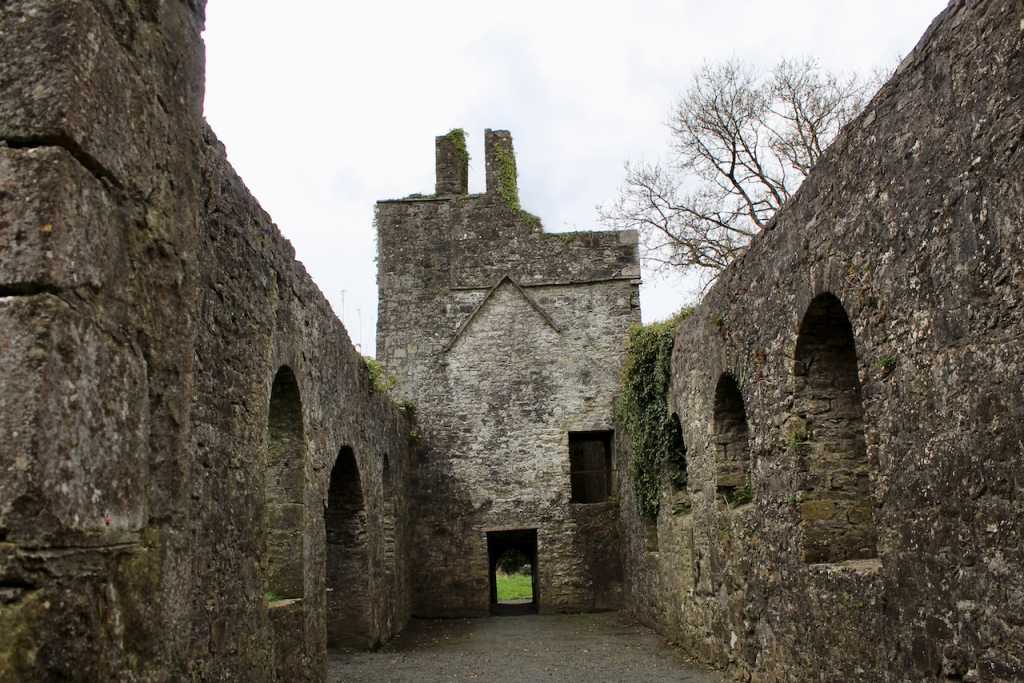
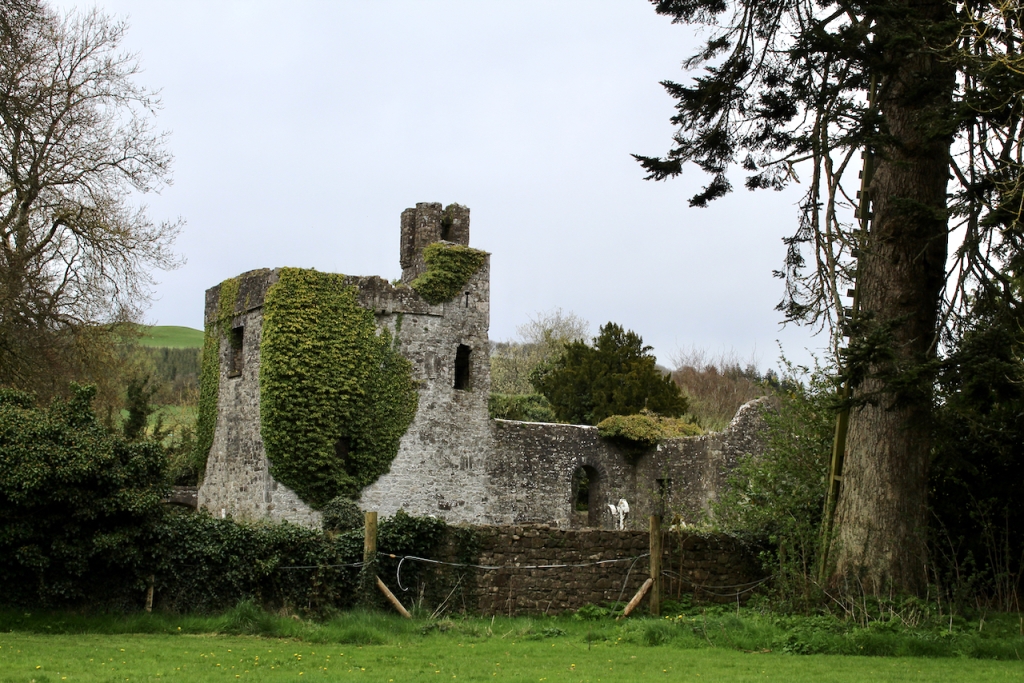
Oliver Plunkett became a Catholic Archbishop of Armagh, but Catholics were persecuted in his time. He was accused of being part of the fictitious Popish Plot and was executed in Tyburn in London in 1681. He was canonised as a saint in 1975. His head is kept as a relic in St. Peter’s church in Drogheda.
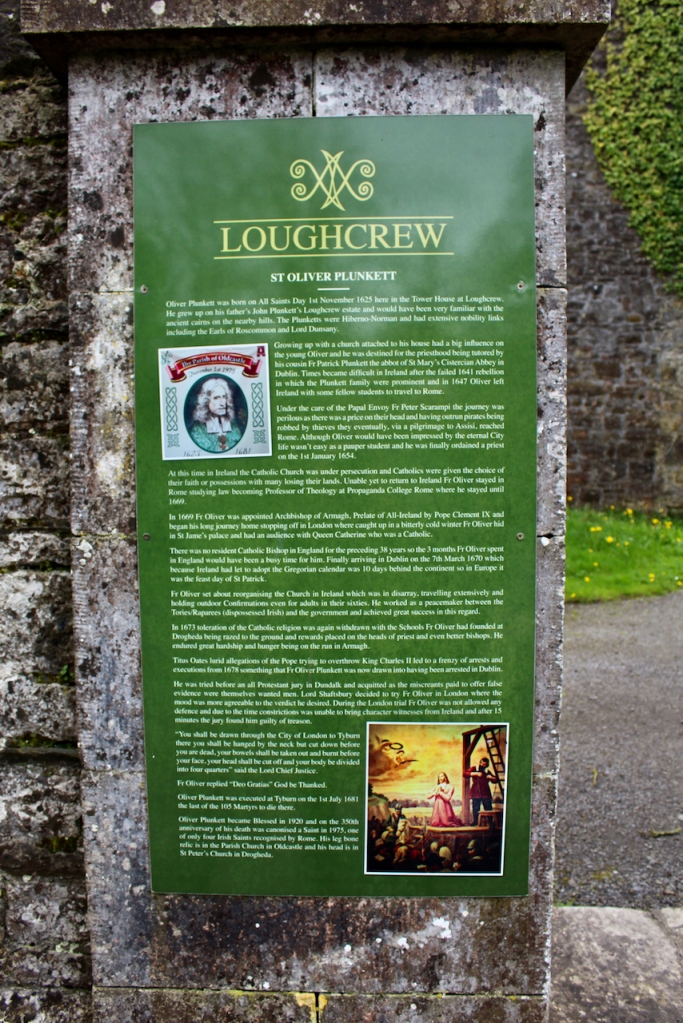

Mark Bence-Jones writes in his A Guide to Irish Country Houses (1988) that the house was said to have a curse on it, for it was burnt three times within 100 years.


On the first two occasions the was rebuilt. The 1820s version was designed by Charles Robert Cockerell (1788-1863) for James Lenox William Naper (1791-1868). Charles Robert Cockerell was an English writer, architect and archaeologist who spent seven years on his Grand Tour. A lodge, lake, garden and conservatory were also designed at this time. The house was destroyed by fire in 1888 and rebuilt by Thomas Newenham Deane & Son.
After the third fire, in 1964, the ruin was demolished and “the vast stones and fallen capitals are now strewn about the ground like the remains of some lost city of antiquity.”
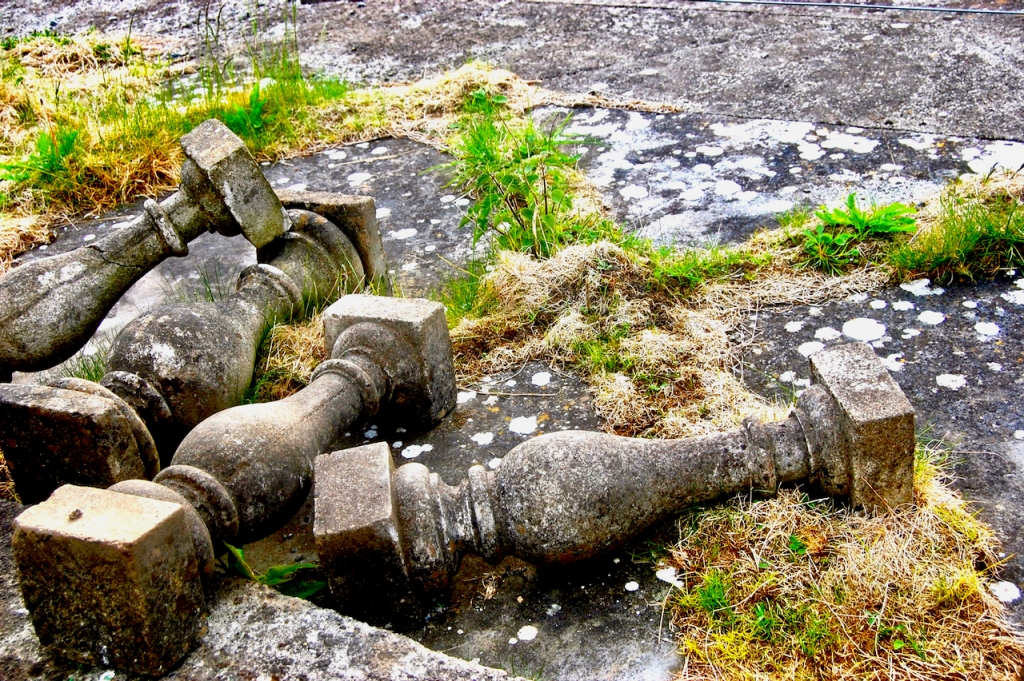

Timothy William Ferres tells us that the Napers were the second largest landowners in County Meath, with 18,863 acres.
James Naper (abt. 1625-1676), fourth son of Sir Samuel Naper MP, of Moor Crichel, Dorset, and grandson of Robert Napier, Chief Baron of the Irish Exchequer, 1593, married Dorothy daughter of Sir Anthony Petty, of Romsey, Hampshire, and sister of the William Petty of Down Survey fame. [2]
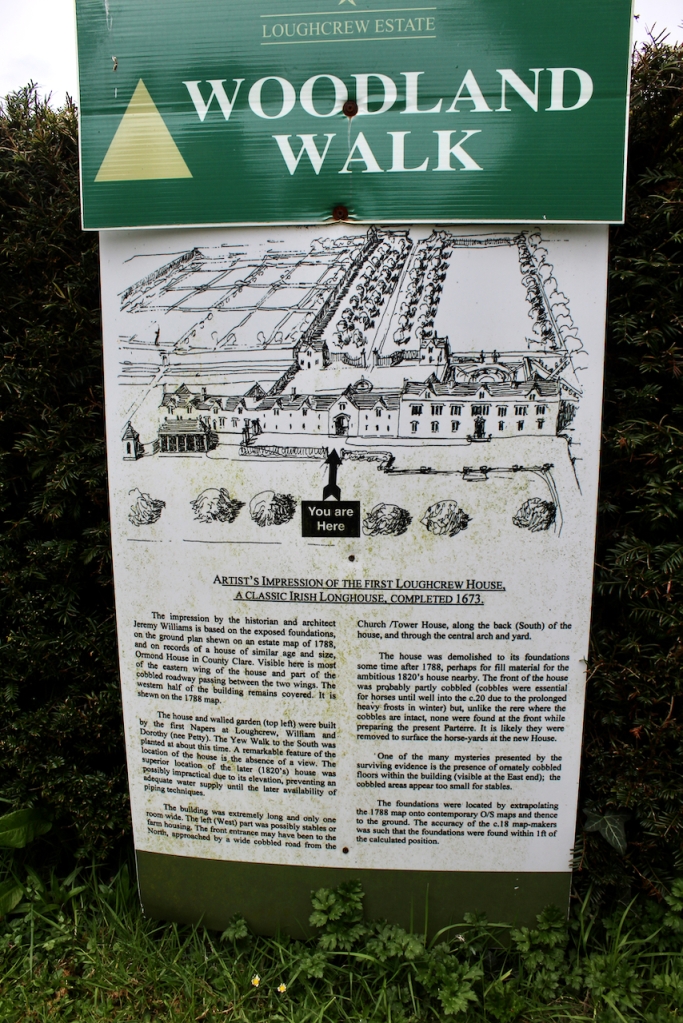
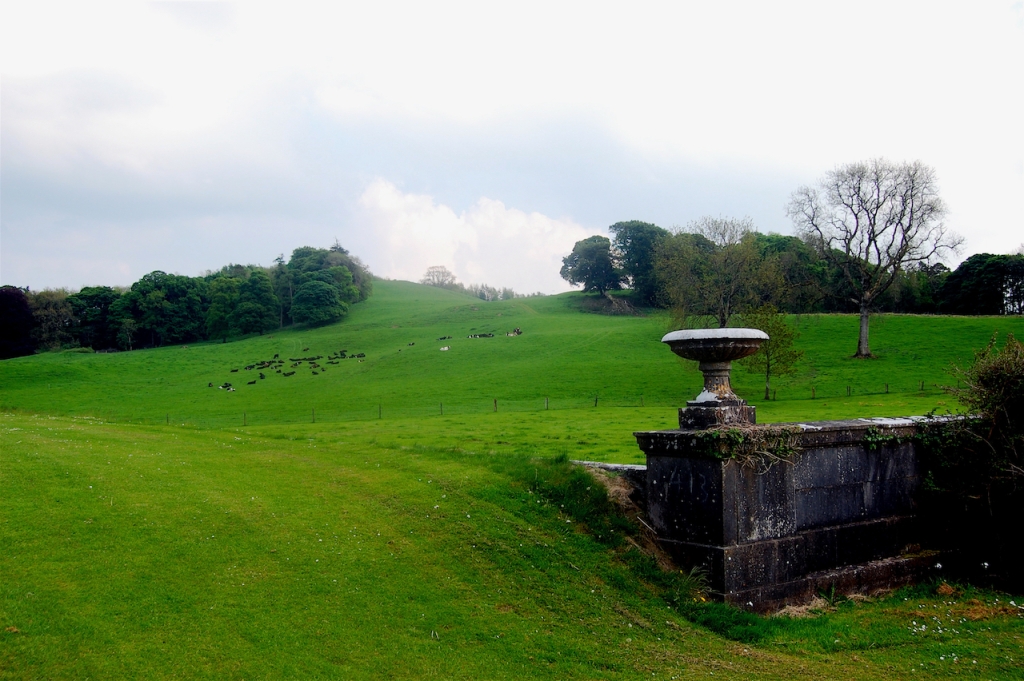
James of Loughcrew and Dorothy had three sons and two daughters: William, the oldest son, died unmarried. The next son, James (d. 1718), was the successor. There was another son, Lt. Gen Robert, and then daughters Frances and Elizabeth.
Elizabeth (1660-1736/7) married Thomas Bligh (d. 1710) of Rathmore, County Meath, who served as MP for County Meath. Frances married Richard Ingoldsby (d. 1712), whose father had moved from England and was Mayor of Limerick.
James (d. 1718) was High Sheriff of County Meath in 1702 [see 2]. In 1684 he married Elizabeth, daughter of James Tandy, of Drewstown, County Meath, and by her had two daughters, Dorothy and Sarah. He then married Elizabeth Barry in 1695, daughter of Richard Barry (d. 1694) 2nd Baron Barry of Santry. Third, he married Anne, daughter of Ralph Dutton 1st Baronet Dutton, of Sherborne, Co. Gloucester.
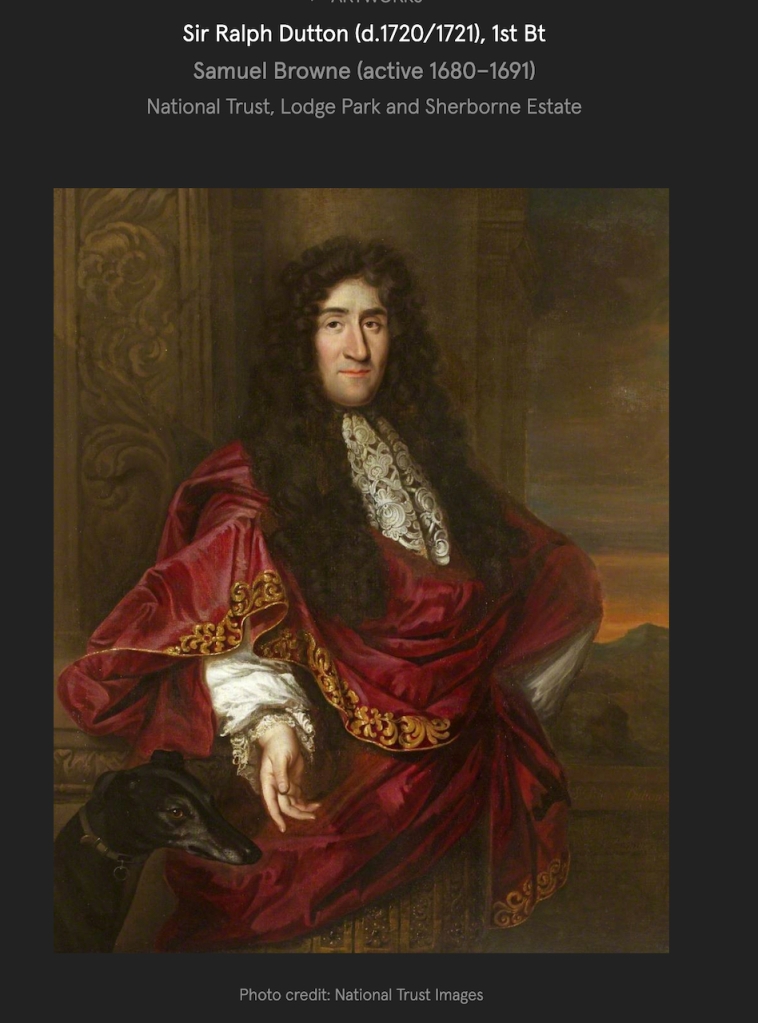
James and his third wife Anne had a son, James Lenox Naper (c. 1713-1776). He changed his name to Dutton so must have inherited property through his mother. 2nd Baronet Dutton died in 1743 with no heir so this must be when James inherited and changed his name to Dutton.

James Dutton né Lenox was High Sheriff of County Meath in 1740. In 1734 he married Catherine, daughter of Henry Ingoldsby, by whom he had an only child, John, who died unmarried in 1771. Secondly he married Jane, daughter of Christopher Bond, of Newland, Gloucestershire, and they had many children.
Their daughter Frances married Charles Lambart (d. 1819) whom we came across before as he lived at Beauparc in County Meath, another Section 482 property.
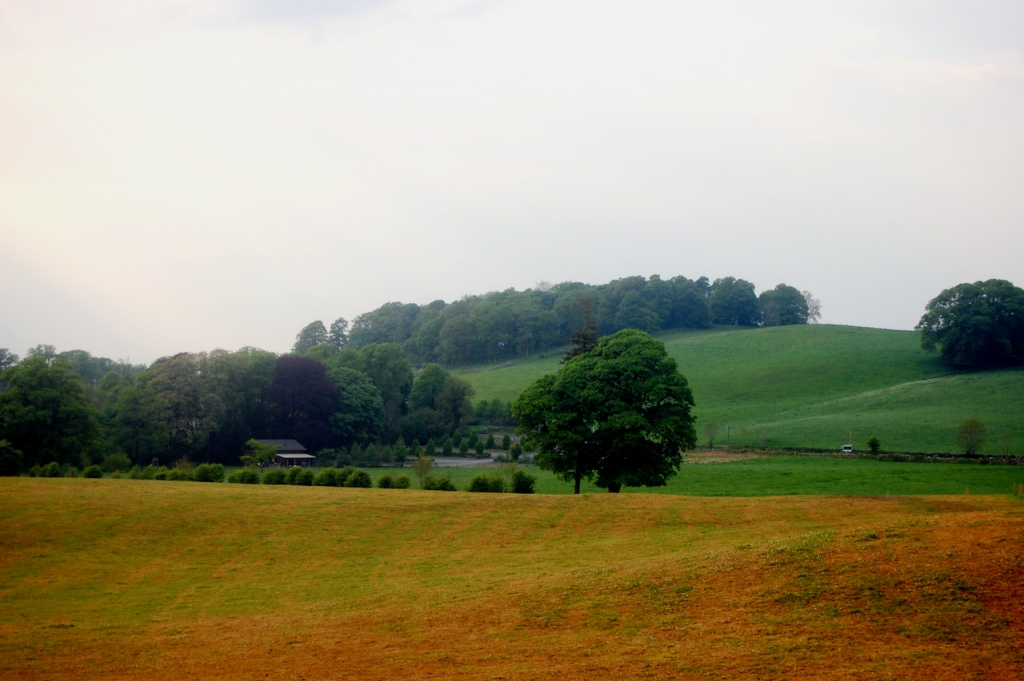
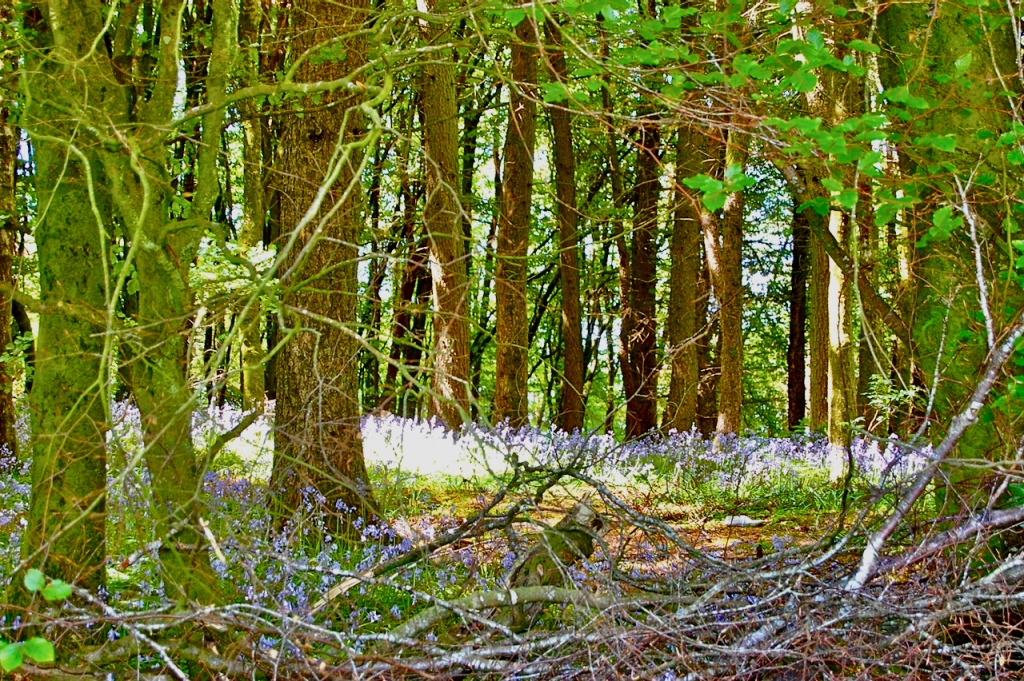
Their oldest son, James (1744-1820) succeeded as the 1st Baron Sherborne, of Sherborne, Co. Gloucester, the title from his great-uncle. It was the second son of James and Jane née Bond, William (1749-1791) who inherited Loughcrew. Since his older brother had continued the name of Dutton, circa 1777 William’s name was legally changed to William Naper by Act of Parliament, under the terms of his father’s will.
William married Jane Travell, daughter of the Rev Ferdinando Tracy Travell, of Gloucestershire. Loughcrew passed to their son, James Lenox William Naper (1791-1868). He was M.P, Justice of the Peace and Deputy Lieutenant for County Meath. He married Selina Skipworth, daughter of Grey, 8th Baronet Skipwith, of Prestwould, Co. Leicester, who lived in Newbold Hall, Warwickshire.
James Lennox William Naper (1791-1868) commissioned the building of Loughcrew House in 1823, a year after he was appointed High Sheriff of Meath. Ferres tells us that he was a busy landlord and writer, and he served as chairman of the Poor Law Guardians during the Famine years and subsidised the emigration of tenants to Canada in the 1830s. [see 2]

James and Selina’s daughter Lelia Jane married Lt.-Col. John Nicholas Coddington (1828-1917) of Oldbridge, County Meath, the house that is now the location of the Battle of the Boyne museum (see my entry about Places to visit in County Meath).
James and Selina’s son James Lenox Naper (1825-1901) inherited the estate of Loughcrew. A younger son, William Dutton Naper, was Justice of the Peace and had a son, Lenox Arthur Dutton Naper (1877-1965).
James Lenox Naper (1825-1901), like his forebears, also served as Deputy Lieutenant. In 1877, at the age of 52, he married Catharine Frances Rowley, daughter of Clotworthy Wellington William Robert Rowley, 3rd Baron Langford of Summerhill, County Meath.
The first major fire at Loughcrew House in 1888, in James Lenox and Catharine Frances’s time. They hired Thomas Newenham Deane & Son to rebuild the house.
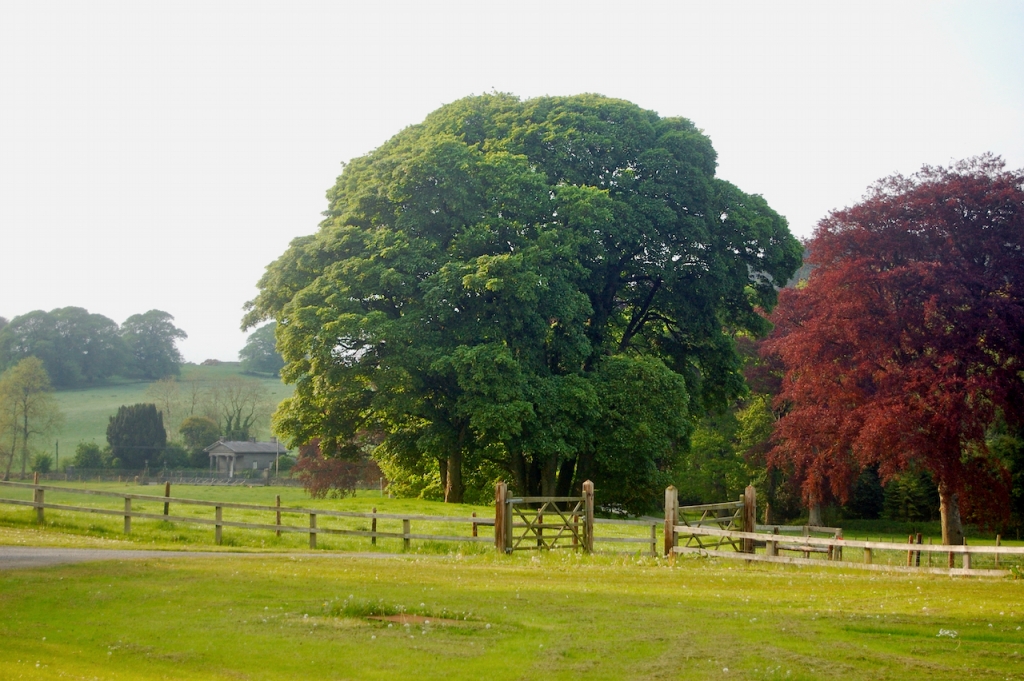
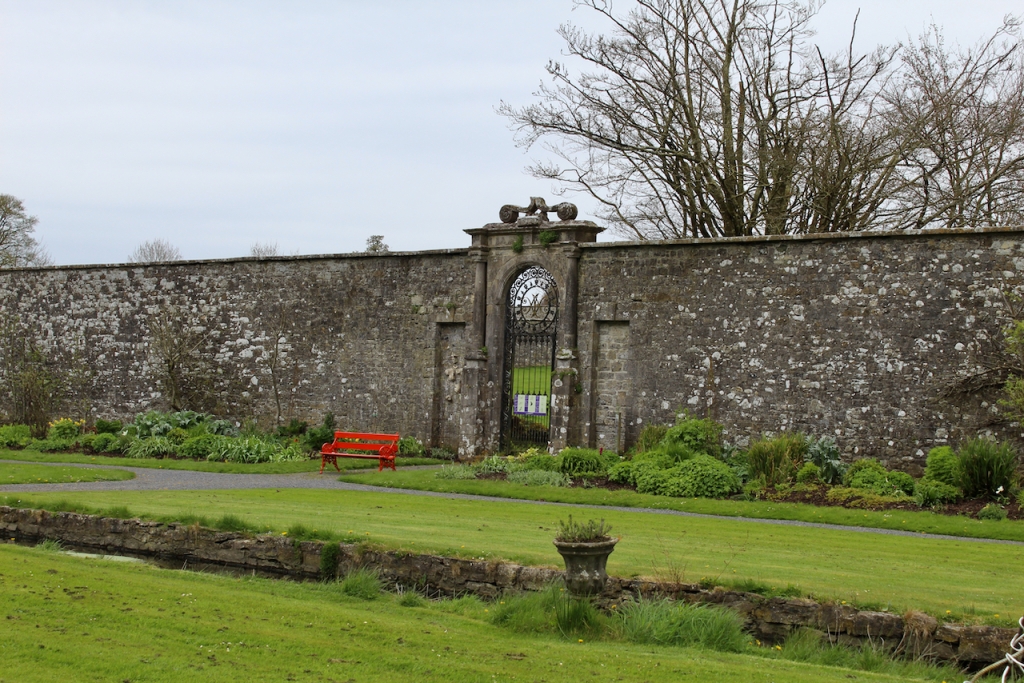
James Lenox and Catharine Frances had a son, William Lenox Naper (1879-1942). He gained the rank of Captain in the Royal Horse Guards, and also served as Justice of the Peace. In 1902 he married Adela Mary Charlotte, eldest daughter of Colonel Walter Rodolph Trefusis. William Lenox Naper died at the age of 63 without having any children.
Lenox Arthur Dutton Naper (1877-1965) married Laura Daphne Theodora Annesley in 1912. She was the daughter of Major Oliver Francis Theodore Annesley. Lenox Arthur Dutton gained the rank of Lieutenant-Colonel in the Royal Artillery. It was his son, Nigel William Ivo Naper (1922-1978), who inherited the estate of Loughcrew.
Nigel married Carola Elisabeth Darley, daughter of Lt.-Col. Denis George Farren Darley of Prospect, Sallins, County Kildare. He fought in World War II and was awarded the Military Cross.

There were two more major fires in the house in 1959 and 1964.
The Irish Land Commission took 600 acres of the estate in 1967 and it was divided between his three sons on Nigel`s death in 1978: James Denis Merrik Naper, Charles William Lenox Naper and Francis Graham Dutton Naper.
Charles married Emily Jane Dashwood in 1981. Emily and Charles Naper have converted the old conservatory Garden House, pavilions, servant quarters and stables into the current living area, school of gilding and studio area. The Garden House is attached to the original courtyards.
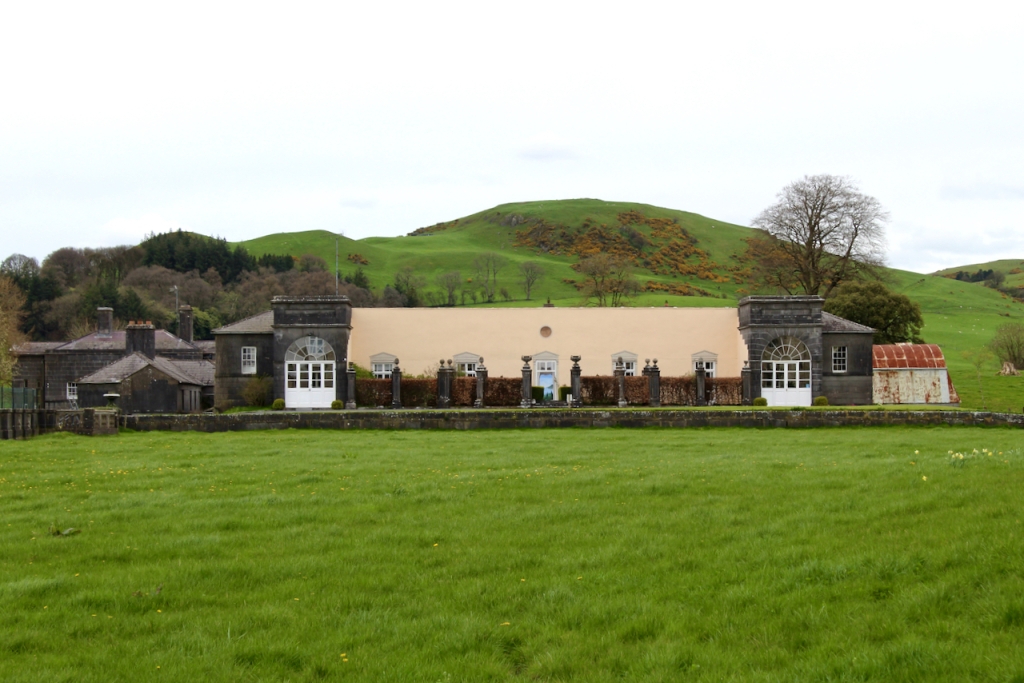

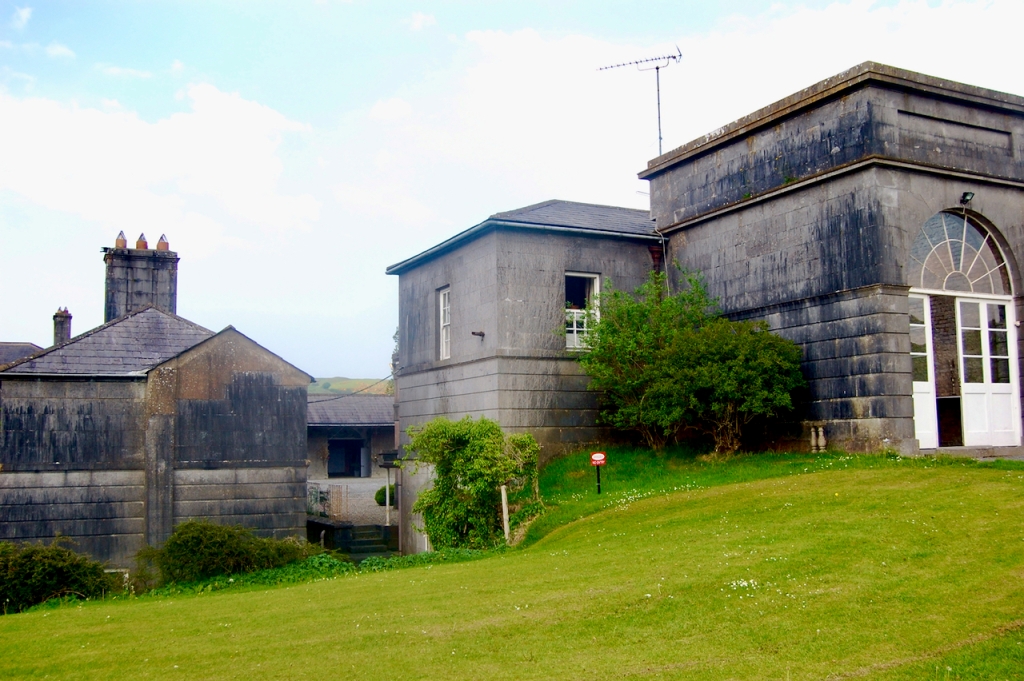
They have revived the 17th century gardens and established Loughcrew Garden Opera. Loughcrew Garden Opera has been holding operas and concerts in the grounds of the estate since 2000 during the summer months, which has proved immensely popular.
Weddings, exhibitions and craft workshops have also been held in the large rooms within the courtyard buildings.
The house currently comprises two principal reception rooms, two sun-rooms, kitchen, five bedrooms, a basement, and a guest wing with three further bedrooms.


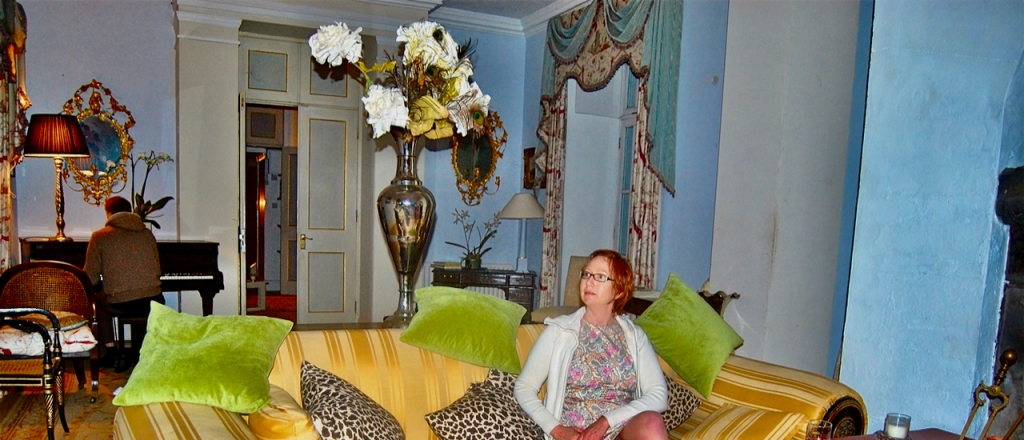
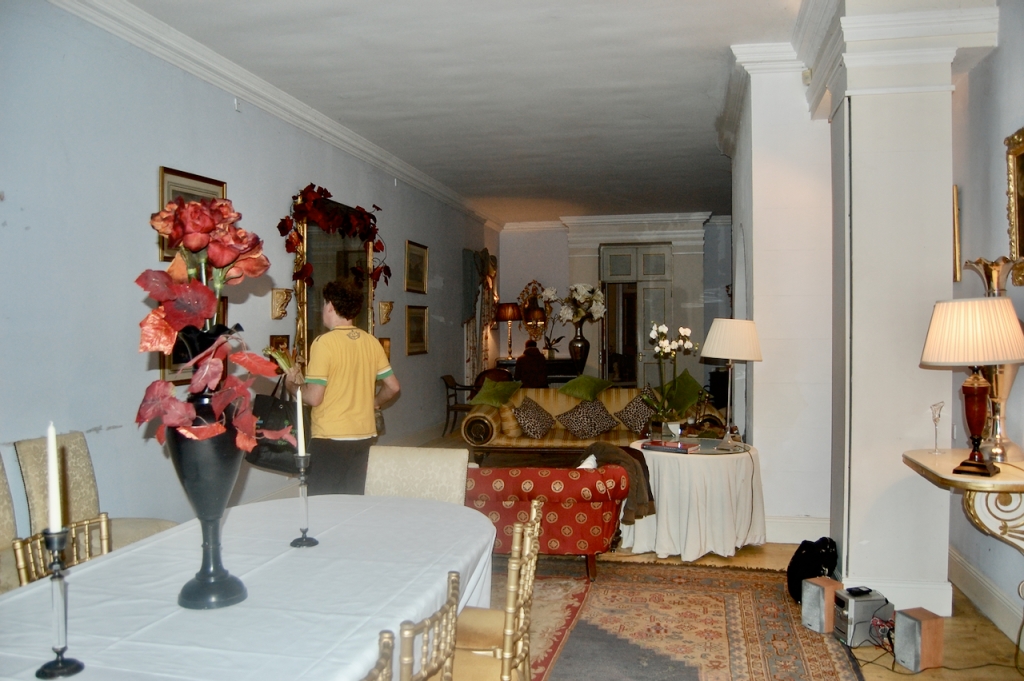
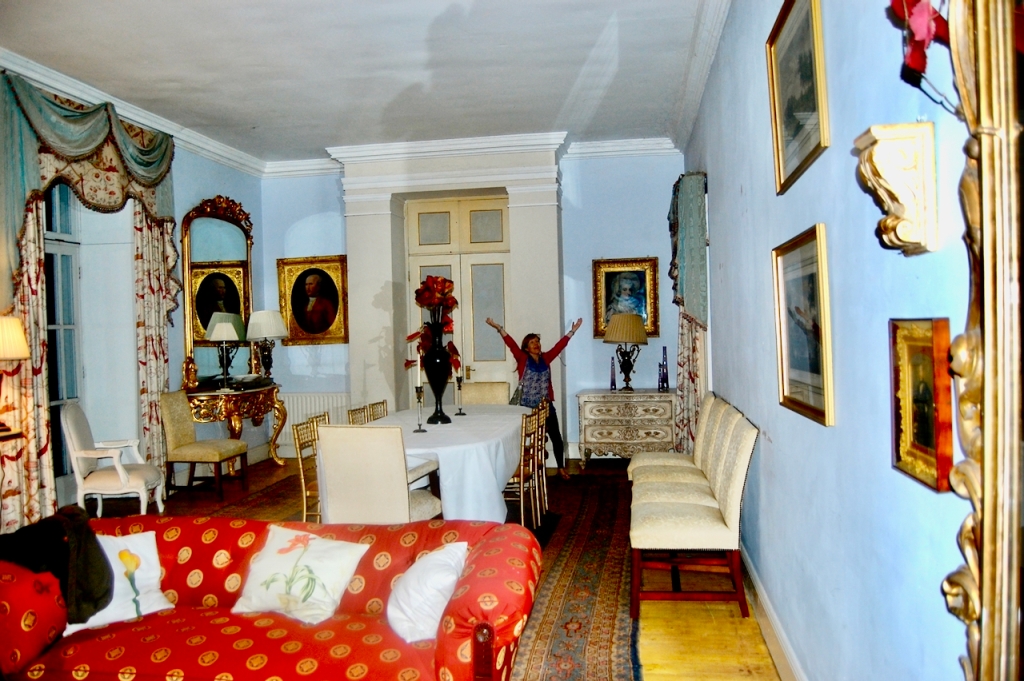


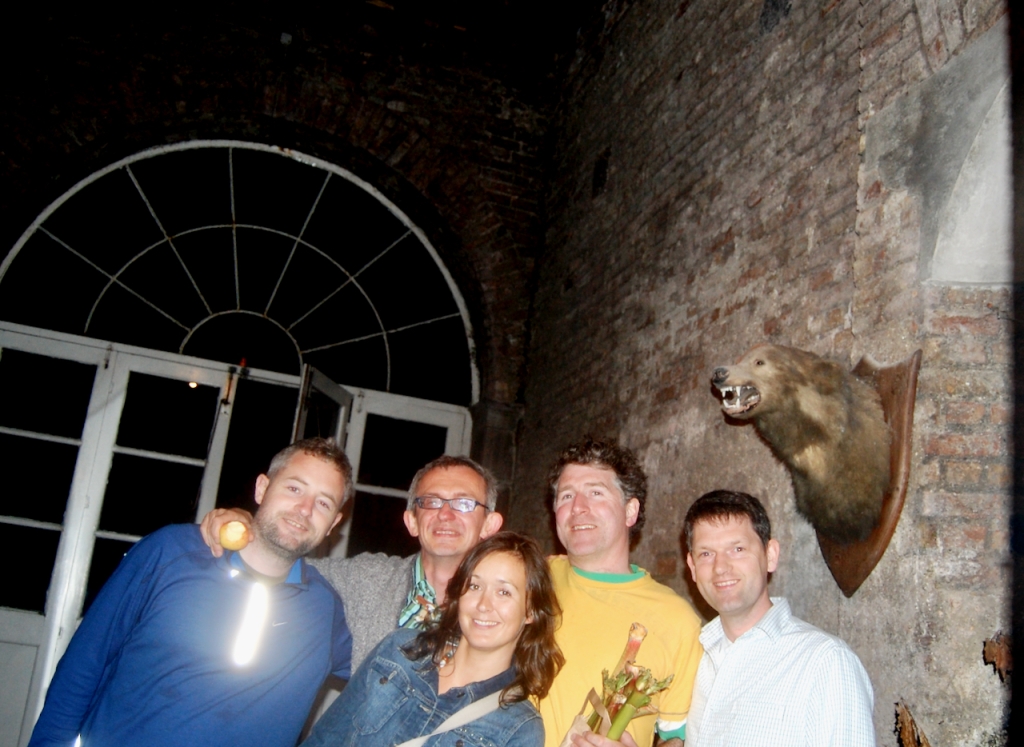
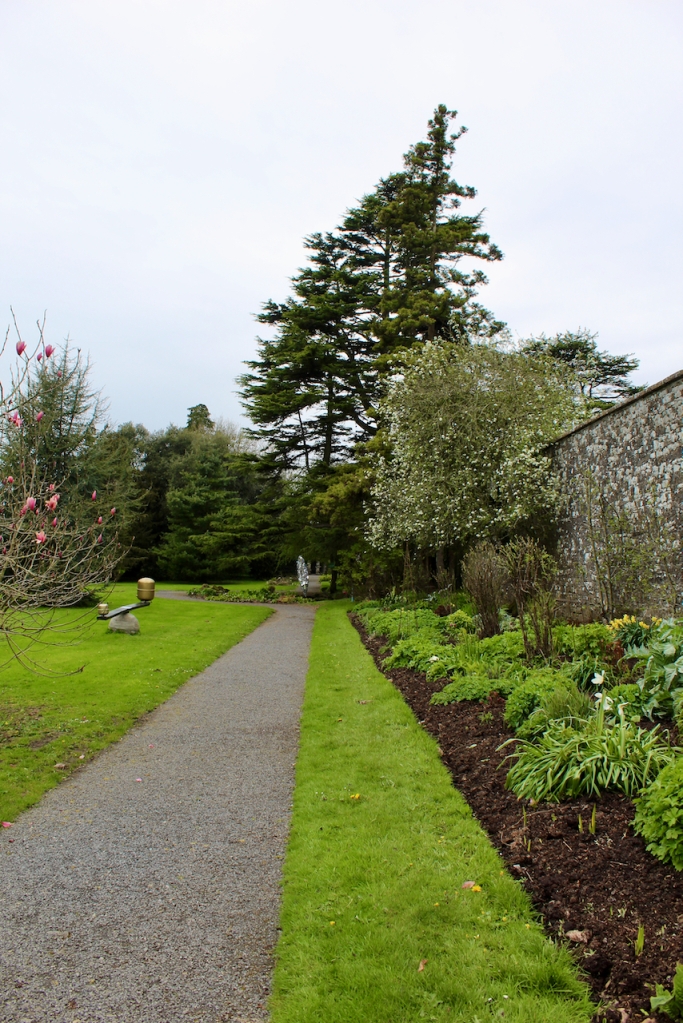

Lougcrew Gardens have been created by generations of the Naper family since the 1660s. The Gardens are open to the public for a number of months during the year.
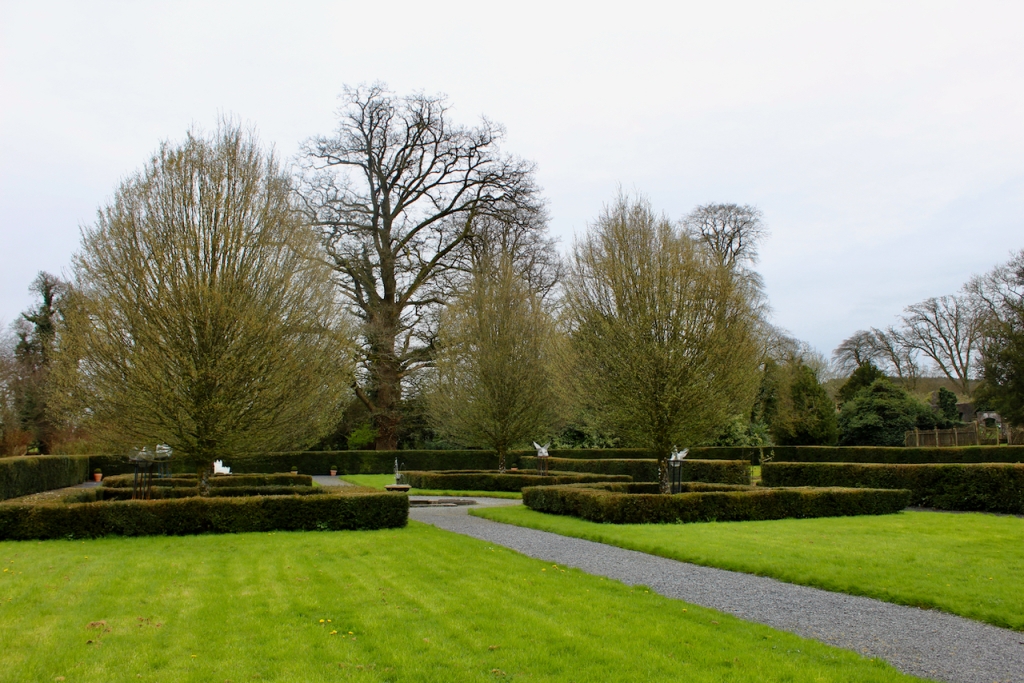
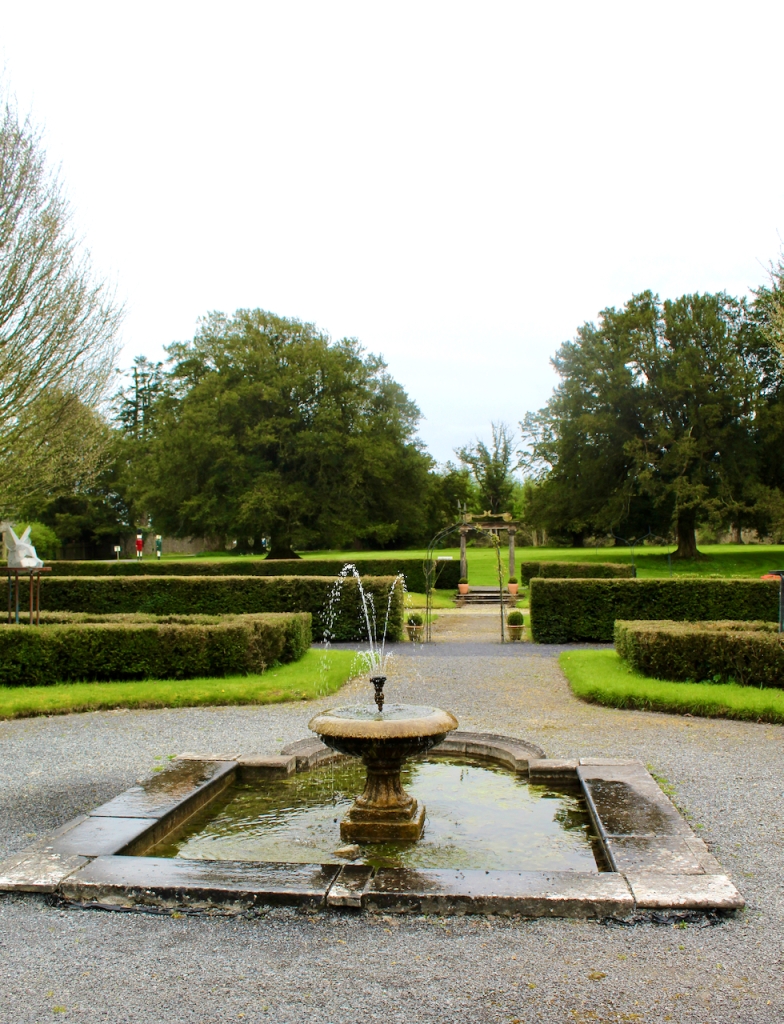

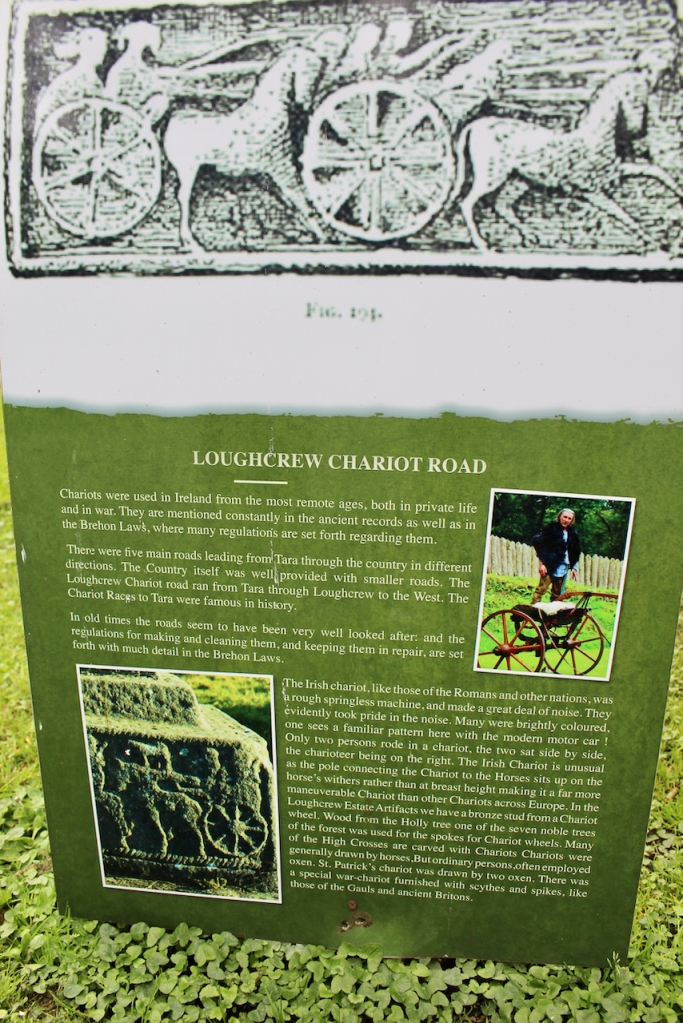
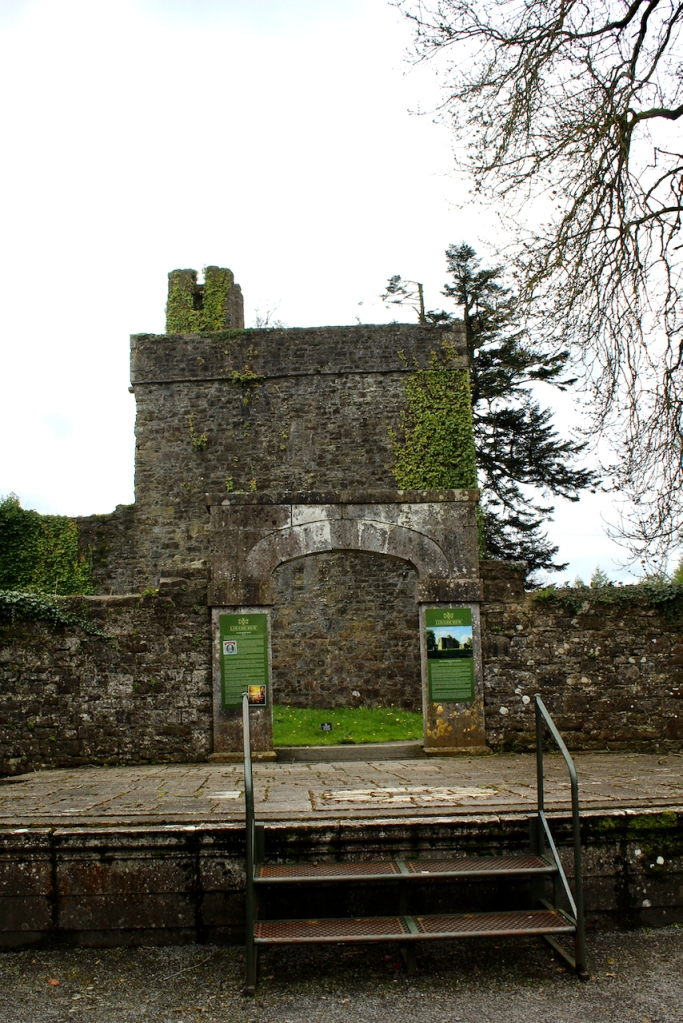
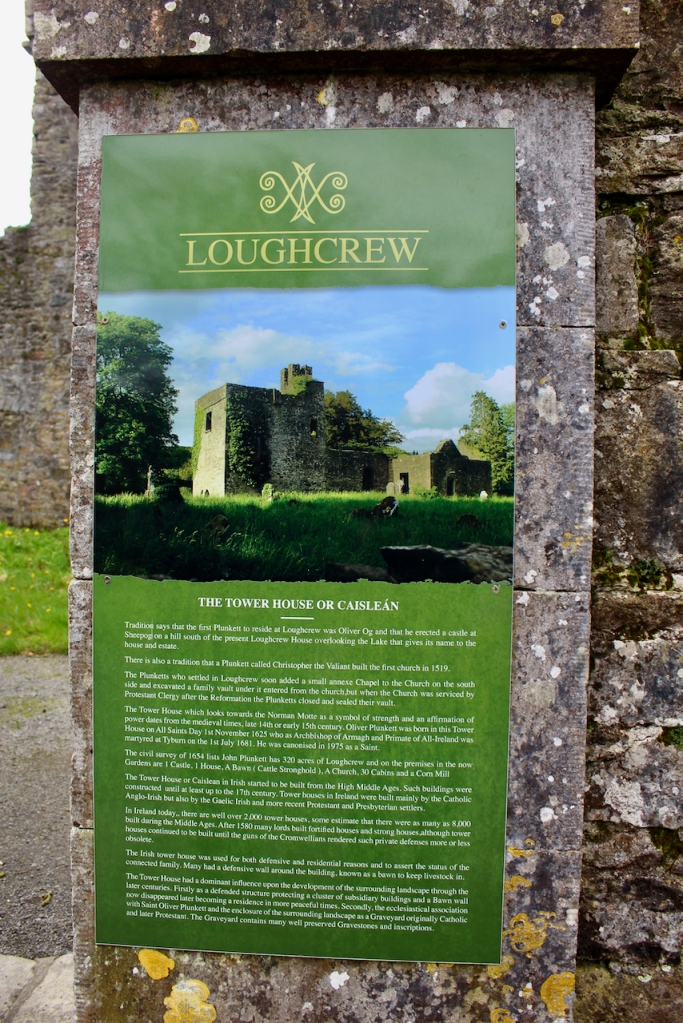


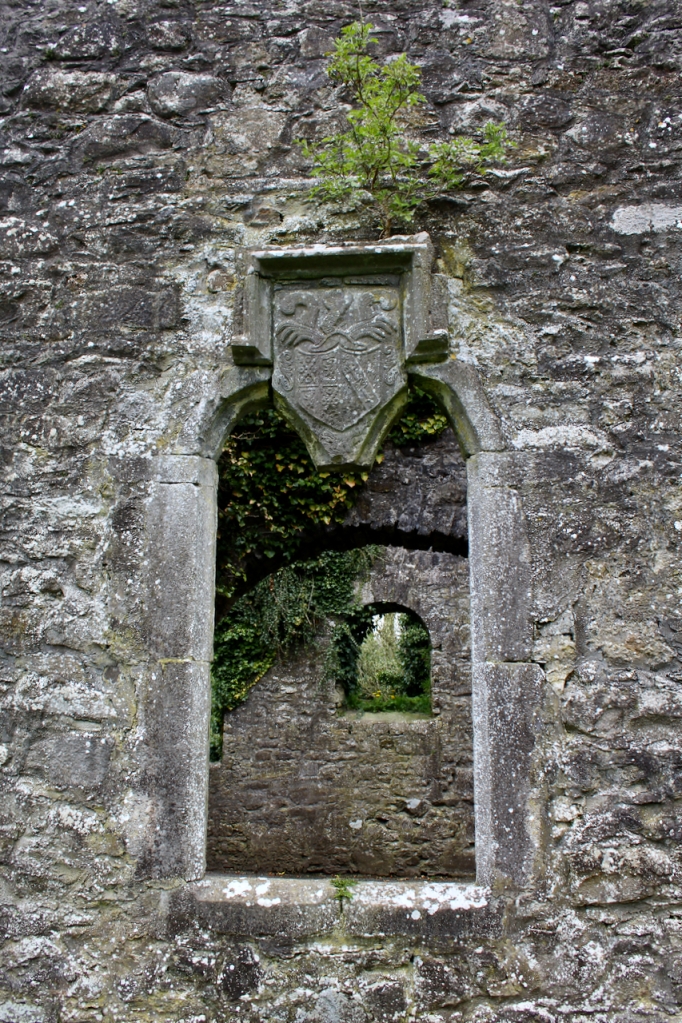
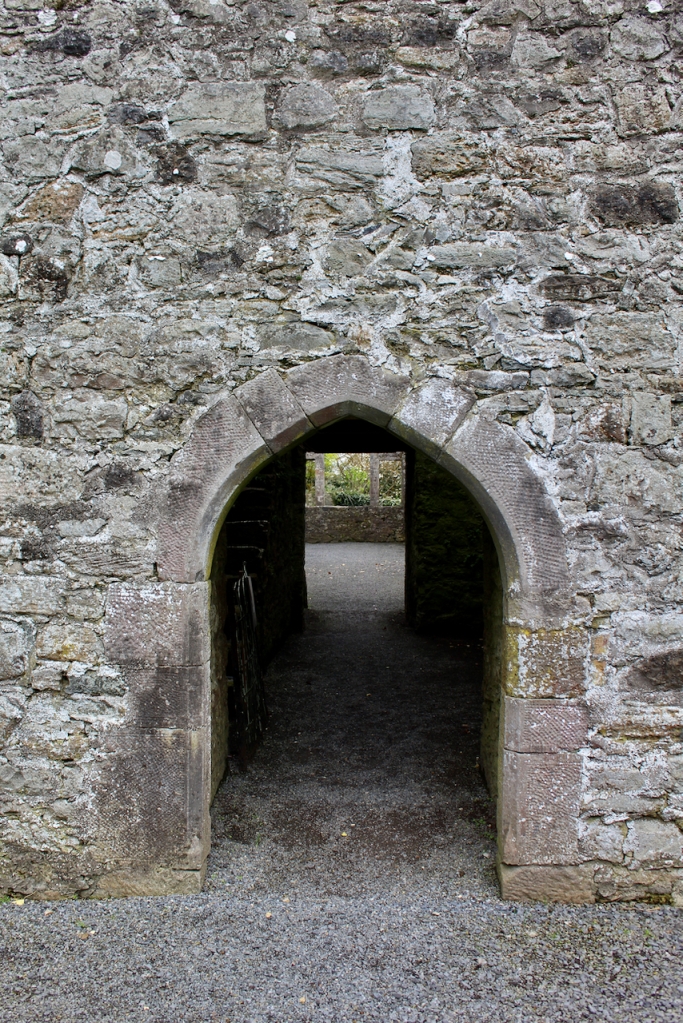
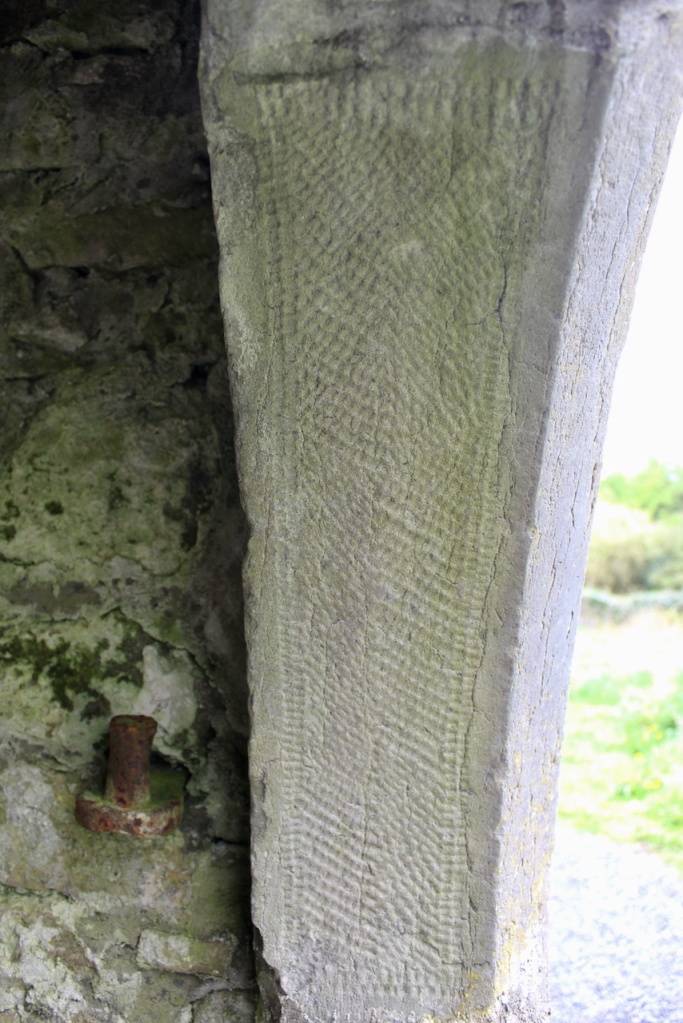
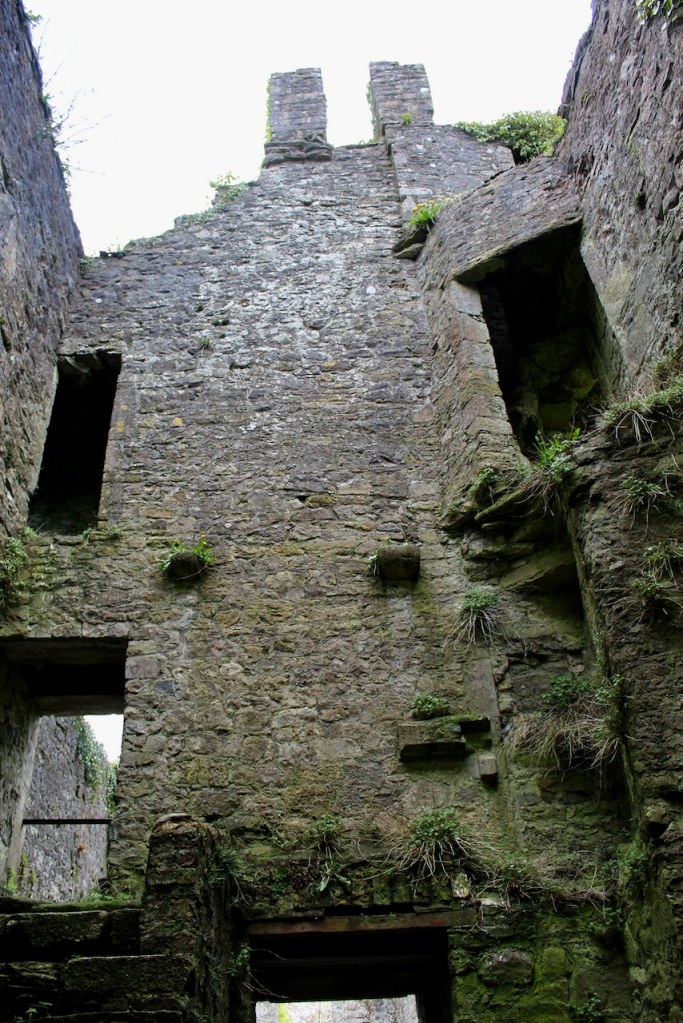
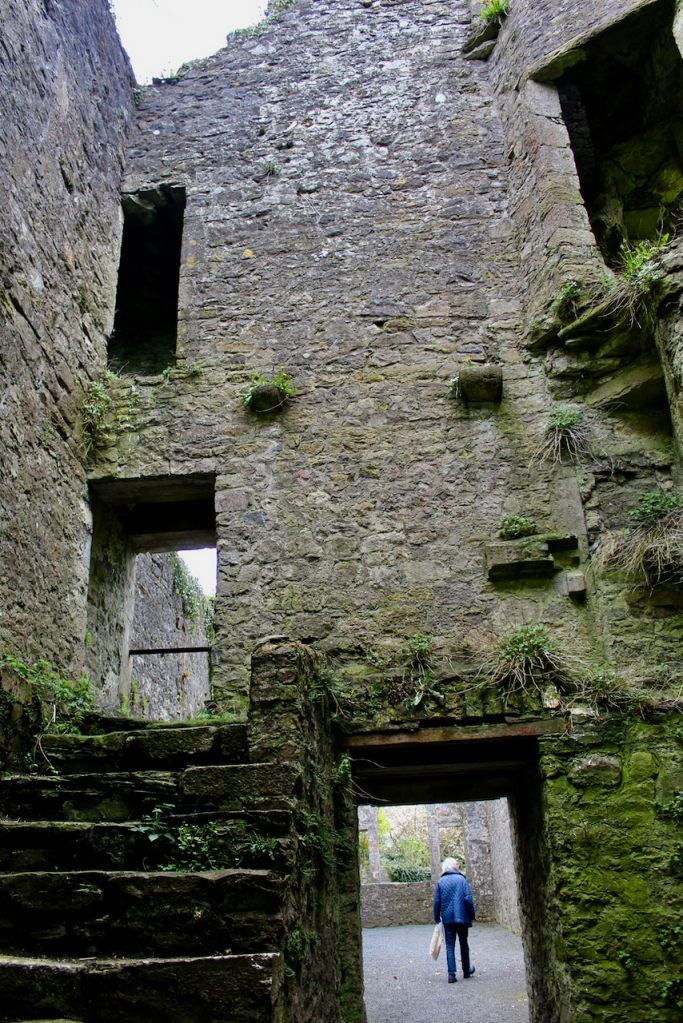
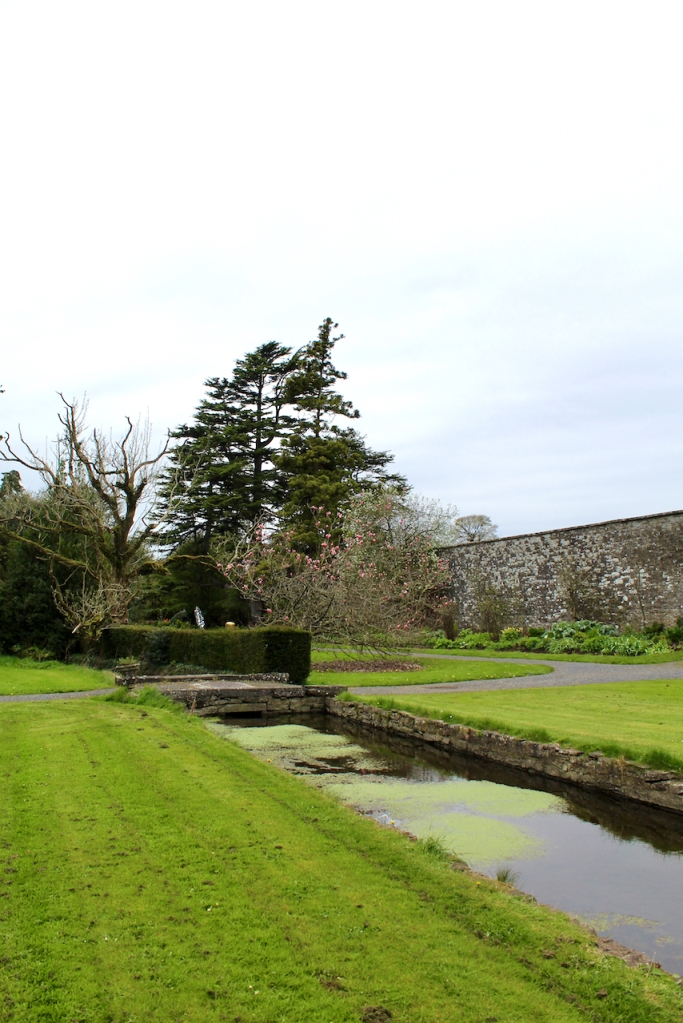
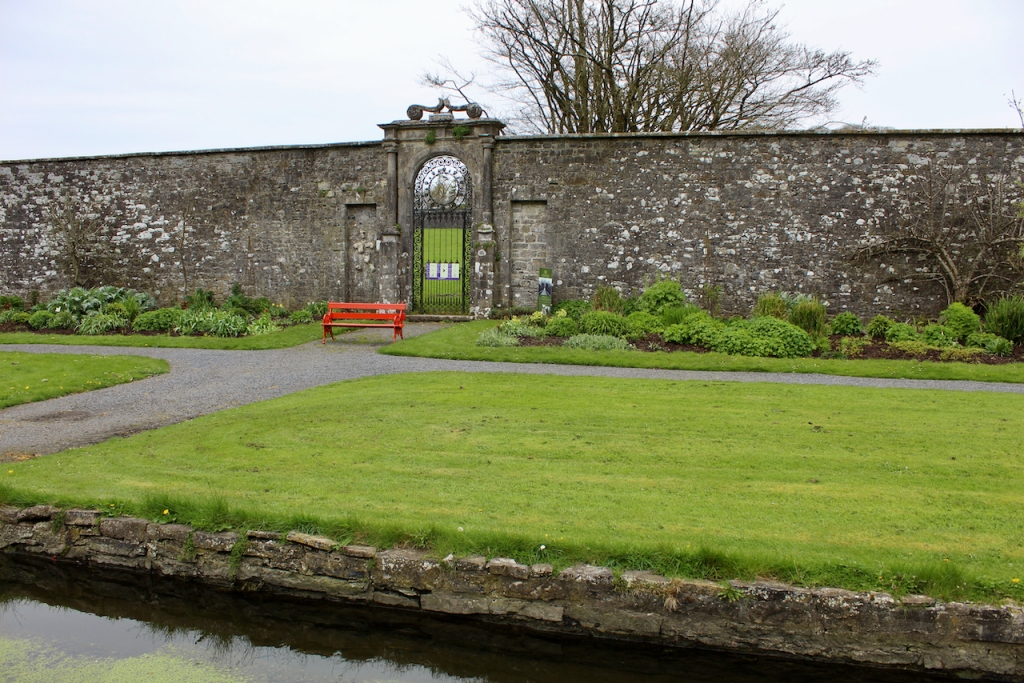
[1] https://www.archiseek.com/2015/1825-loughcrew-house-co-meath/
[2] http://lordbelmontinnorthernireland.blogspot.com/2013/05/loughcrew-house.html
Text © Jennifer Winder-Baggot, www.irishhistorichouses.com